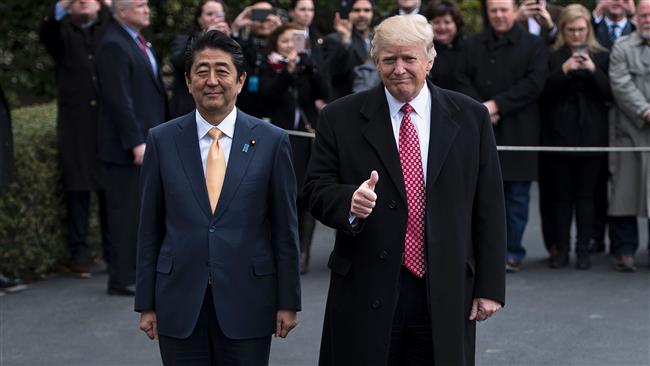Japan launches new spy satellite amid tensions with North Korea
Japan has launched a new spy satellite into space in an apparent mission to enhance the monitoring of North Korea.
The IGS Radar 5 satellite was launched into orbit on a Japanese H-2A rocket from the Tanegashima Space Center in southern Japan on Friday.
Japan currently has three optical satellites for daytime surveillance and three radar satellites for nighttime monitoring. Two of those are backups.
The new satellite will replace one of the three radar satellites that had been launched in 2011.
The mission of the satellites is officially declared as “information-gathering” — a euphemism for spying — but they are also used to monitor damage in the wake of natural disasters. Japan started putting “information-gathering” satellites into orbit in 2003.
Paving the path to war?
The new launch comes at volatile times in the region. North Korea has attracted much attention with its increased missile and nuclear activities. On March 6, North Korea fired four ballistic missiles, three of which landed into the Sea of Japan, in an area that Tokyo claims as its sovereign territory. Japan reacted with rhetorical anger but took no action.

The United States, meanwhile, has been stirring regional tensions by holding military drills with South Korea and Japan that are meant to be a signal to North Korea.
North Korea interprets the maneuvers as rehearsals for a possible invasion of the country. It has been technically at war with South Korea for decades; a war between the two Koreas in the early 1950s ended in a ceasefire only and not a peace agreement.
Amid the military maneuvers, missile launches, and mutual pledges of strong action, the risks are high for the US, Japan, South Korea, and the North to stumble into war. While the joint drills between the US and South Korea are an annual occurrence, they can be particularly provocative this year.

The US has just begun deploying an advanced missile system in South Korea in a declared mission to counter threats from the North. The installment of the Terminal High-Altitude Area Defense (THAAD) has angered Pyongyang, as well as its main ally Beijing.
The THAAD is equipped with a powerful detection system known as an X band radar, which experts say would destabilize regional security and upset the region’s current military balance.
China has warned that a war is likely and has been repeatedly calling on all parties to try to de-escalate the tensions to avoid conflict.
Just on Thursday, US Secretary of State Rex Tillerson said two decades of US policies had failed to deter North Korea from advancing a military nuclear program, calling for “a new approach.” He did not explain.
VIDEO | Press TV's news headline
Explosion heard near Isfahan due to activation of air defenses
‘Iran retaliation against Israel ensured no aggression would go unanswered’
US vetoes Palestinian request for full UN membership
Iran sufficed to strike only part of Israel’s military positions: FM to UN chief
IRGC: Israel’s Dimnoa nuclear reactor not among Op. True Promise’s targets
VIDEO | West Asia awakens
'Stop any further Israeli adventurism,' Iran FM tells Security Council














 This makes it easy to access the Press TV website
This makes it easy to access the Press TV website